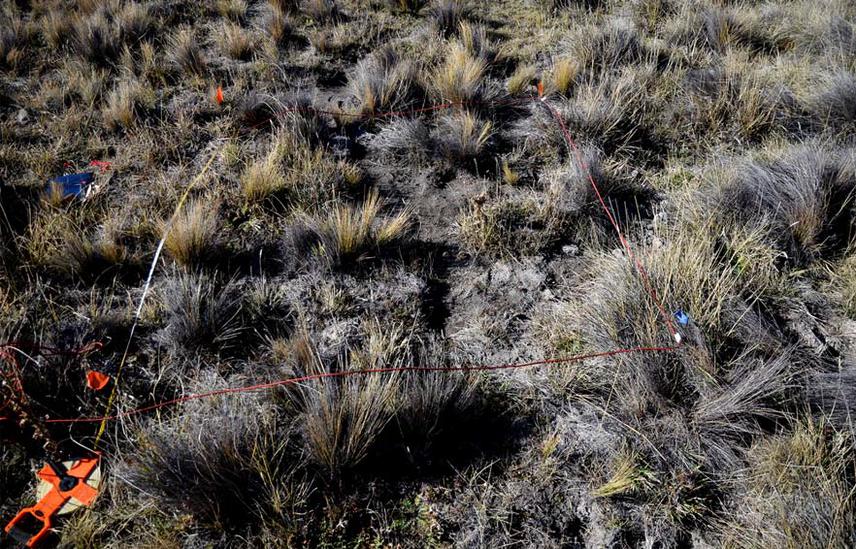Mauro Nicolas Tammone
The proposed project consists of a long-term monitoring program, in which, regular estimation of animal abundance, number of social groups, and habitat conditions will be used to assess population trend and to quantify the effects of livestock and environmental change on C. sociabilis, leading to the develop of guidelines for the sustainable management of this species.

4‐m square plot used to measure vegetation cover. Mean cover of plant species at studied tuco‐tuco populations in Estancia Fortin Chacabuco.
The colonial tuco-tuco is a group-living subterranean rodent whose geographic range is restricted to near 700 km2 in Nahuel Huapi National Park, Argentina. This endemic Patagonian rodent is categorized as critically endangered. Increasing grazing by livestock and emerging effects of climate change threaten the future of this species. Although long-term field studies have been used to characterize the behavior, ecology, population genetics, paleoecology, and natural history of colonial tuco-tucos, these research has not evaluated the impact of livestock on the persistence of populations of this species. Anecdotal observations suggest that grazing by livestock may affect populations of colonial tuco-tucos in multiple ways, including changes to the vegetation consumed by C. sociabilis and destruction of trampling of the burrows in which these rodents live. To date, however, these potential impacts have not been examined in any rigorous, quantitative manner.
Accordingly, the proposed project will use comparative studies of areas with and without grazing using exclosures fence to assess the effects of excluding livestock from areas where tuco-tuco burrows occurs, thereby providing direct, experimental evidence regarding the interactions between cattle and colonial tuco-tucos. At the same time, by registering data on climate conditions using data loggers, we will initiate monitoring of the climatic conditions in the region. Combined with the proposed long term population monitoring, this will allow quantitative evaluation of the effects of environmental conditions on the persistence of this species and to assess population trend. All of this information will be used to develop guidelines for effective conservation strategies and sustainable management of this species within the National Park.